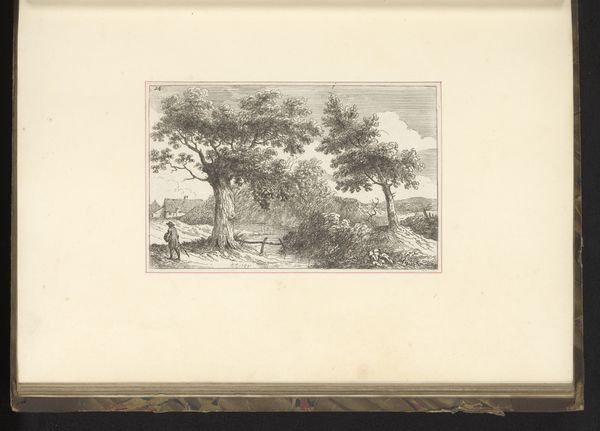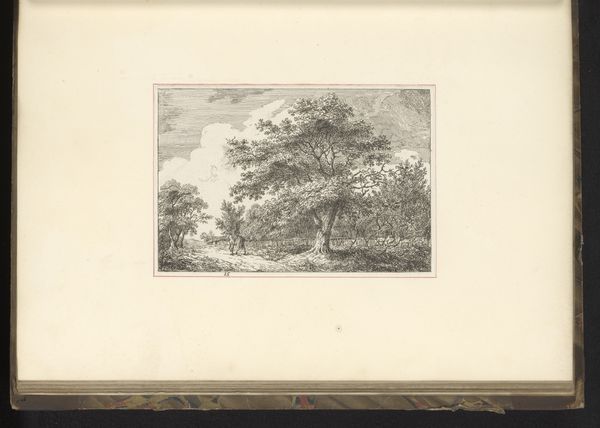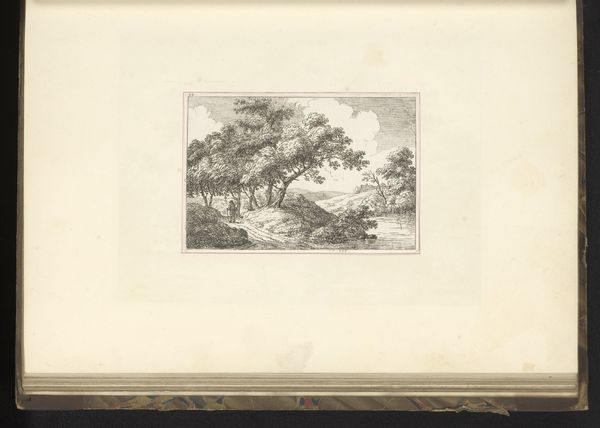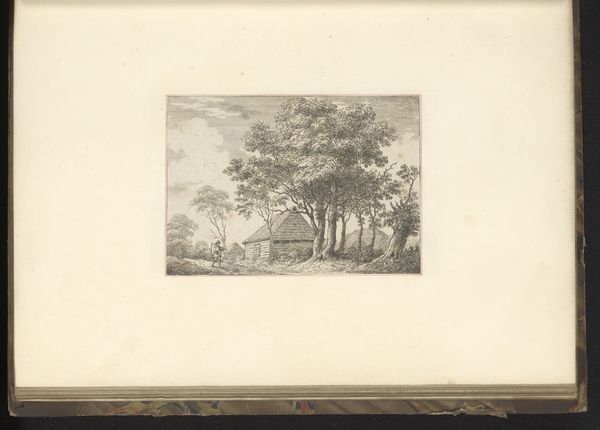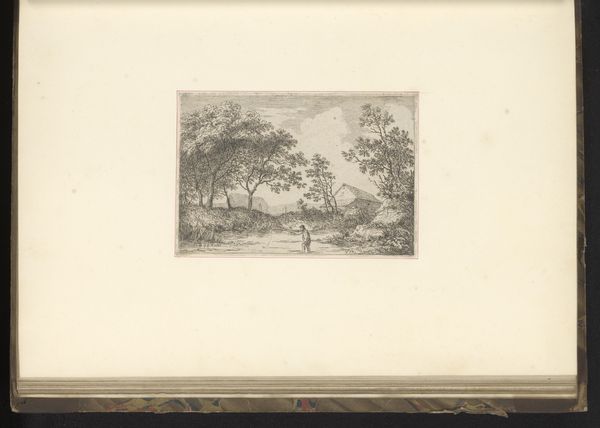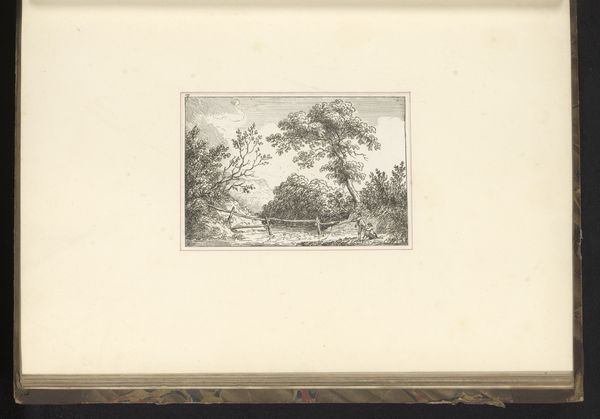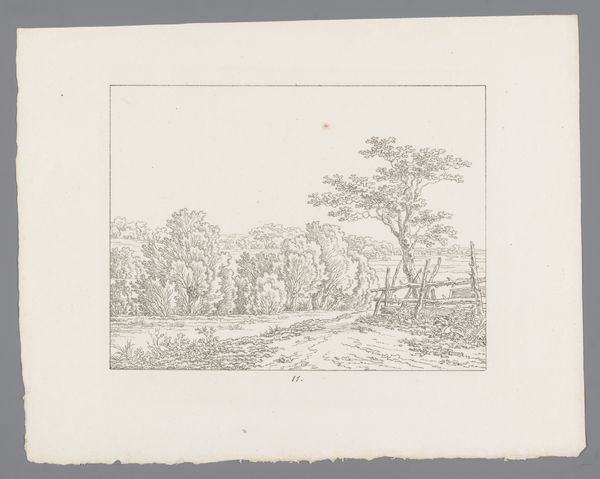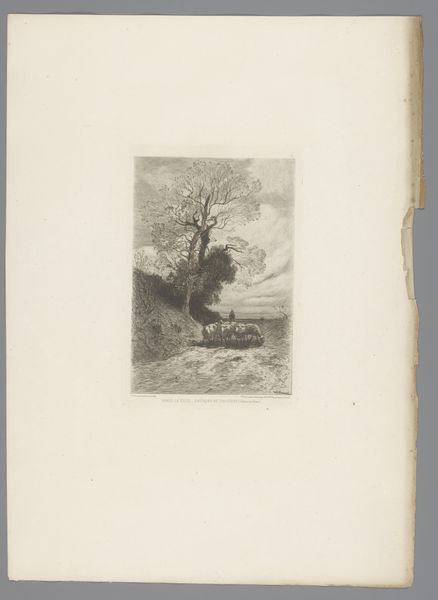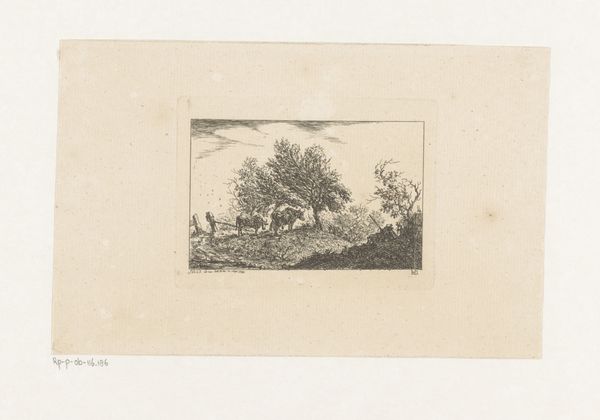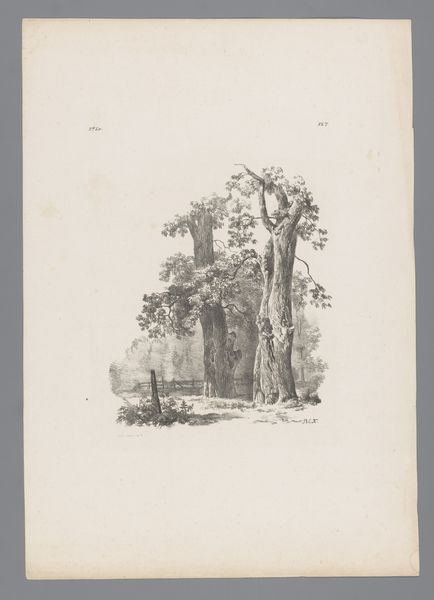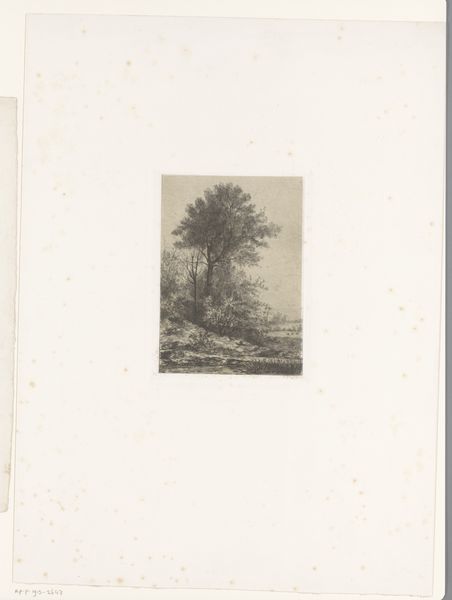
Dimensions: height 111 mm, width 176 mm
Copyright: Rijks Museum: Open Domain
Curator: At first glance, I'm drawn to the stark contrast and the quiet, almost secretive gathering depicted in the foreground. Editor: Today we’re observing “Landscape with Figures by Two Trees.” Created between 1748 and 1806 by Edward Edwards, it's an etching and engraving printed on paper, housed right here at the Rijksmuseum. It really exemplifies the Romantic movement, I think. Curator: Absolutely, there’s a reverence for nature coupled with a sort of social commentary. I am curious, who are these figures huddling by the trees? Are they disenfranchised people seeking refuge? Or are they simply figures enjoying the landscape? Editor: That's precisely what is fascinating about such works; they invite viewers to interpret narratives and layers of the past. Think about the socio-political context of the late 18th century. What kind of people have the luxury of contemplating landscape as figures to be integrated into it? Who might feel exiled *from* that scene? How are such images being consumed, and what are they normalizing or obscuring about British rural life at that time? Curator: It brings forward broader conversations on class and privilege in that era, for sure. How images like this contribute to romanticizing an unequal society, or perhaps offer a silent critique depending on the intended audience and its social awareness. The composition is fascinating as well; it centers around two imposing trees which frames not only the people in focus, but a structure in the distance too. This arrangement is an indication, isn't it, of how rural life is measured alongside civic or religious power? Editor: Indeed. The positioning invites such comparisons. And given Edwards' role within institutions like the Royal Academy, we have to consider how this pastoral image reinforces or subtly questions dominant perspectives on land ownership, social order, and the "picturesque." Curator: That adds yet another level. Knowing the context shapes and informs our understanding and feelings towards it. It isn't a mere scenic landscape anymore, but one teeming with unspoken perspectives of society. Editor: Examining images like Edwards’ reminds us of art's role as a window into specific societal values of the era. Curator: It makes me wonder about whose story is often overlooked, urging a more critical lens towards canonical landscapes.
Comments
No comments
Be the first to comment and join the conversation on the ultimate creative platform.
